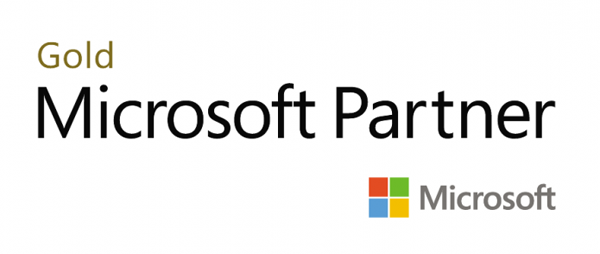Developing Microsoft Azure Solutions, On Demand 20532
- Seminar
- E-Learning
- Zurzeit keine Termine
- 40 Unterrichtseinheiten
- Teilnahmebescheinigung
Seminarnummer: 29463
This On Demand online course is intended for students who have experience building ASP.NET and C# applications. Students will also have experience with the Microsoft Azure platform and a basic understanding of the services offered.
Nutzen
After completing this course, students will be able to:
- Compare the services available in the Azure platform.
- Configure and deploy web applications.
- Creating Azure Web Apps from the gallery.
- Deploying and monitoring Azure Web Apps.
- Creating and configuring Azure Virtual Machines.
- Create and manage a storage account.
- Manage blobs and containers in a storage account.
- Create, configure and connect to a SQL Databases instance.
- Identify the implications of importing a SQL standalone database.
- Manage users, groups and subscriptions in an Azure Active Directory instance.
- Create a virtual network.
- Implement a point-to-site network.
Zielgruppe
The candidates targeted by this training have basic experience in implementing and monitoring Microsoft Azure solutions. Candidates are also proficient with the development tools, techniques, and approaches used to build application solutions.
Anforderungen
In addition to their professional experience, students must have experience working with the Azure platform. They will also have a general understanding of C# concepts for the lab scenario. Candidates experience can include:
- Compare the services available in the Azure platform
- Configure and deploy web applications
- Creating Azure Web Apps from the gallery
- Deploying and monitoring Azure Web Apps
- Creating and configuring Azure Virtual Machines
- Create and manage a storage account
- Manage blobs and containers in a storage account
- Create, configure, and connect to a SQL Databases instance
- Identify the implications of importing a SQL standalone database
- Manage users, groups, and subscriptions in an Azure Active Directory instance
- Create a virtual network
- Implement a point-to-site network
Inhalte
Module 1: Overview of the Microsoft Azure Platform
Microsoft Azure provides a collection of services that you can use as building blocks for your cloud applications. Lesson 1, Azure Services, provides a recap of the services that you might have worked with when using the Microsoft Azure platform in the past. Lesson 2, Azure Portals, describes the two current portals that are available for managing Azure subscriptions and services. Lesson 3, Lab Overview, provides a walkthrough of the lab application that you will be working on throughout the course.
Module 2: Building Application Infrastructure in Azure Although many Microsoft Azure services use virtual machines, sometimes your application might have a unique need where it requires a virtual machine that is completely unmanaged. Azure provides networking, backup, and virtualization services as part of its Infrastructure-as-a-Service (IaaS) offering. Lesson 1, Azure Virtual Machines, introduces the Virtual Machines service and describes the options that you can use for creating a virtual machine. Lesson 2, Azure Virtual Machine Workloads, provides details on the types of workloads that you can deploy to a virtual machine. Lesson 3, Migrating Azure Virtual Machine Instances, describes the options for migrating virtual machines to and from Azure. Lesson 4, Azure Virtual Networks, reviews the Microsoft Azure Virtual Network offering available in Azure. Lesson 5, Highly Available Azure Virtual Machines, reviews the options and features that must be considered when designing your Virtual Machine instances for high availability scenarios. Lesson 6, Virtual Machine Configuration Management, describes the common methods for managing and duplicating the configuration for virtual machines. Lesson 7, Customizing Azure Virtual Machine Networking, reviews the options for managing inbound and outbound connection rules for your virtual machine.
Module 3: Hosting Web Applications on the Azure Platform This module provides an overview of the Azure Web Apps service. Lesson 1, Azure Web Apps, describes the Web Apps service in Azure. Lesson 2, Hosting Web Applications in Azure, describes the behavior and lifecycle of an Azure Web App. Lesson 3, Configuring an Azure Web App, discusses the various configuration options available to change the behavior of your Web App. Lesson 4, Publishing an Azure Web App, describes the process for publishing a web application using WebDeploy to Azure Web Apps.
Module 4: Storing SQL Data in Azure Dynamic web applications must store the data that is being managed and manipulated by end users. ASP.NET technologies such as ADO.NET and Entity Framework provide a way for accessing data in SQL Server. In the cloud, the Microsoft Azure platform provides a database as a service offering that allows developers to use SQL in the same way as they would in an on-premises location. Lesson 1, Azure SQL Database Overview, describes the Azure SQL Database service and reasons you would consider using it. Lesson 2, Managing SQL Databases in Azure, describes the familiar and new management tools that are available for use with a SQL database that is hosted in Azure. Lesson 3, Azure SQL Database Tools, describes the SQL Server Data Tools (SSDT) templates, panes, and projects that are available in Microsoft Visual Studio 2013. Lesson 4, Securing and Recovering an Azure SQL Database Instance, describes the recovery scenarios relevant in Azure SQL Database.
Module 5: Designing Cloud Applications for Resiliency As a developer, you should keep in mind certain considerations while designing applications for the cloud. Although there are many platform improvements available in the ASP.NET ecosystem, you need to rethink the way you design your applications, and the patterns that are used, with respect to the scalability and reliability metrics present
Module 2: Building Application Infrastructure in Azure Although many Microsoft Azure services use virtual machines, sometimes your application might have a unique need where it requires a virtual machine that is completely unmanaged. Azure provides networking, backup, and virtualization services as part of its Infrastructure-as-a-Service (IaaS) offering. Lesson 1, Azure Virtual Machines, introduces the Virtual Machines service and describes the options that you can use for creating a virtual machine. Lesson 2, Azure Virtual Machine Workloads, provides details on the types of workloads that you can deploy to a virtual machine. Lesson 3, Migrating Azure Virtual Machine Instances, describes the options for migrating virtual machines to and from Azure. Lesson 4, Azure Virtual Networks, reviews the Microsoft Azure Virtual Network offering available in Azure. Lesson 5, Highly Available Azure Virtual Machines, reviews the options and features that must be considered when designing your Virtual Machine instances for high availability scenarios. Lesson 6, Virtual Machine Configuration Management, describes the common methods for managing and duplicating the configuration for virtual machines. Lesson 7, Customizing Azure Virtual Machine Networking, reviews the options for managing inbound and outbound connection rules for your virtual machine.
Module 3: Hosting Web Applications on the Azure Platform This module provides an overview of the Azure Web Apps service. Lesson 1, Azure Web Apps, describes the Web Apps service in Azure. Lesson 2, Hosting Web Applications in Azure, describes the behavior and lifecycle of an Azure Web App. Lesson 3, Configuring an Azure Web App, discusses the various configuration options available to change the behavior of your Web App. Lesson 4, Publishing an Azure Web App, describes the process for publishing a web application using WebDeploy to Azure Web Apps.
Module 4: Storing SQL Data in Azure Dynamic web applications must store the data that is being managed and manipulated by end users. ASP.NET technologies such as ADO.NET and Entity Framework provide a way for accessing data in SQL Server. In the cloud, the Microsoft Azure platform provides a database as a service offering that allows developers to use SQL in the same way as they would in an on-premises location. Lesson 1, Azure SQL Database Overview, describes the Azure SQL Database service and reasons you would consider using it. Lesson 2, Managing SQL Databases in Azure, describes the familiar and new management tools that are available for use with a SQL database that is hosted in Azure. Lesson 3, Azure SQL Database Tools, describes the SQL Server Data Tools (SSDT) templates, panes, and projects that are available in Microsoft Visual Studio 2013. Lesson 4, Securing and Recovering an Azure SQL Database Instance, describes the recovery scenarios relevant in Azure SQL Database.
Module 5: Designing Cloud Applications for Resiliency As a developer, you should keep in mind certain considerations while designing applications for the cloud. Although there are many platform improvements available in the ASP.NET ecosystem, you need to rethink the way you design your applications, and the patterns that are used, with respect to the scalability and reliability metrics present
Hinweise
MOC On Demand Trainings sind original Microsoft Trainings, in denen Sie zeit- und ortsungebunden lernen können.
Diese Trainings enthalten:
- Zugang zum offiziellen Microsoft Video on Demand Kurs für 90 Tage ab dem ersten Zugriff.
- Einen Lab-Online-Zugang für praktische Übungen, der ab Kauf 6 Monate gültig ist.
- Eine originale MOC Schulungsunterlage in digitaler Form, wie sie auch in den Live-Trainings eingesetzt wird.


